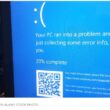Practical notes about cavity filters
Quarter-wave resonant cavity filters are used in many RF applications in land mobile radio. For instance, they are used in duplexers for repeaters, in transmitter combiners, and as filters for specific interference problems. It is important to understand how the various specifications impact the practical use of these cavities. Generally, when filters are required, two criteria must be met — maximum rejection or attenuation at one frequency (or frequency band) and minimum insertion loss at another frequency (or frequency band).
For this article, the term insertion loss is defined as the unintentional loss at the desired pass frequency or band, while rejection is the desired loss at the undesired frequency or band. The goal is to minimize the insertion loss at the desired frequency and maximize the attenuation or rejection at the undesired frequency. This article focuses on the practical aspects of cavity filters rather than the theoretical.
Figure 1 shows a bandpass cavity using dual-loop coupling. The first thing you will notice is the quarter-wave conductor extending down from the top into the cavity. Turning the knob on top will change the length of this conductor (hence, the resonant frequency). The threaded rod can increase or decrease the length of the conductor by the extender section that is connected to the threaded rod. The extender section makes contact with the main conductor section through contact fingers located at the bottom of the main section.
The top end is connected to ground (cavity case) and the opposite end of the conductor is open. The section near the grounded end is low impedance (high current) while the opposite end is high impedance (high voltage). The coupling loops are located near the high current, low impedance (magnetic) end of the conductor. The walls of the cavity are usually silver plated to increase the conductivity and hence the “Q” of the cavity. The cavity Q is also largely dependent upon the volume of the cavity. Because operating frequency range determines the length of the cavity, only by increasing the diameter of the cavity can the volume be increased. Hence, higher cavity Q requires a larger diameter cavity.
Since the cavity is symmetrical, either coupling loop can serve as the input or the output. Photo 1 shows a coupling loop removed from a cavity. Notice that the loop is made of wide copper strips to provide more conducting surface. This minimizes the skineffect at higher radio frequencies. The amount of coupling between the loop and the cavity affects both the insertion loss at the desired pass frequency and the selectivity. An ideal cavity filter would introduce zero insertion loss at the desired pass frequency and infinite loss at frequencies outside the desired passband. However, in practical cavity design and construction, tradeoffs have to be made between insertion loss and selectivity.
Loop coupling depends upon the area enclosed by the loop conductor and the orientation of the loop inside the cavity. Tight coupling minimizes the insertion loss at the desired pass frequency or passband but reduces the selectivity. Loose coupling maximizes the selectivity but increases the insertion loss at the desired pass frequency or passband. Adjusting the position of the loop sets the degree of loop coupling. This is shown in Photo 2.
Both coupling loops on a bandpass cavity are always set to the same coupling point. That is, if one loop is set to 1 dB the other loop should also be set to 1dB. If both loops are set to 1 dB, then the insertion loss of the cavity is 1dB — the coupling loop settings are not additive. The calibration marks are just “ball-park” calibrations. In order for the bandpass cavity to function properly the setting of the input and output loops should be balanced. The balance can be determined using the test setup shown in Figure 2. The notch depth should be the same for each coupling loop. The frequency versus amplitude response of the bandpass cavity can be checked using the setup shown in Figure 3. Alternately, a return loss bridge can be used to adjust the cavity for the proper response as shown in Figure 4. Actually, this method is more accurate since the notch in the return loss display is much sharper then the peak in the bandpass display.
In order to achieve greater overall selectivity, bandpass cavities can be connected in cascade as shown in Figure 5. Figure 6 shows the response curves for various cavity setups. The graph at A represents the response of a single 5-inch cavity with the coupling loops set to 1 dB. The response of the same cavity with the coupling loops set to 2 dB is shown by the graph represented by B. The insertion loss at the desired pass frequency has increased to 2 dB, but the selectivity has improved. Graph C shows the response for two 5-inch cavities connected in cascade with the coupling loops set to 0.5 dB each. The insertion loss of both cavities in cascade is now 1 dB at the desired pass frequency, but the selectivity is much improved. The graph at D shows the response of three 5-inch cavities connected in cascade with the coupling loops set to 0.5 dB each. Thus, the insertion loss at the desired frequency is 1.5 dB, but the selectivity is vastly improved over any of the previous graphs shown.
The graphs in Figure 7 show the response of a single 11-inch bandpass cavity and two 11-inch bandpass cavities in cascade. Notice that the single 11-inch cavity (Figure 7) with the coupling loops at 1 dB provide much superior selectivity than does the 5-inch cavity (Figure 6) with the 1 dB coupling loops. Graph B in Figure 7 shows the response of two 11-inch cavities in cascade with the coupling loops set to 0.5 dB — a marked improvement in selectivity with an insertion loss at the pass frequency of only 1dB.
Typically, the construction of a pass/reject cavity is the same as the bandpass cavity. In fact, a reject cavity can be made from a dual-loop bandpass cavity simply by removing one of the coupling loops and covering the hole left by the removal of the loop. There are special tricks that can turn a dual-loop bandpass cavity into a pass-reject configuration. A capacitor connected between the input/output loops can produce a notch below the passband. Similarly, an inductor can produce a notch above the passband. The frequency spacing between the pass frequency and the reject frequency determines the required inductance or capacitance. Simply connecting the proper coaxial cable between the input/output loops can produce a notch. The notch frequency and the insertion loss at the pass frequency depend upon the impedance and electrical length of the cable.
Another technique used to produce a notch on a pass/reject cavity is to place a capacitor in series with the coupling loop. Tuning of the capacitor sets the notch with respect to the pass frequency. On some pass/reject cavities the capacitor is tuned by moving the dielectric rod in or out. This is located on the side of the cavity. Usually, the pass frequency is set first and then the notching capacitor is adjusted to produce the notch at the correct frequency. Adjusting the pass frequency by adjusting the tuning rod of the resonant cavity will shift both the notch and the pass frequencies simultaneously.
While testing a bandpass cavity filter, a random 75-ohm coaxial jumper cable (typically found lying around the radio shop) was connected between the input/output ports of the cavity — just to see the resulting pass/reject response. The response is shown in Figure 8 and the return loss response is shown in Figure 9. Notice that the return loss response is almost a mirror image of the pass/reject response. Minimum return loss (maximum VSWR) always should occur at or near the frequency corresponding to the bottom of the notch. The maximum return loss (minimum VSWR) should occur at the pass frequency. An examination of Figure 8 and Figure 9 reveals this.
Figure 10 shows the typical connection of a notch filter to the transmission line. This connection requires a single coaxial tee connector. Notice in Figure 11 that at the pass frequency of 159 MHz the insertion loss is 1.73 dB. Introducing a small capacitance across the input of the tee connector can minimize the insertion loss. Instead of using a “lump,” a shorted coaxial stub of the proper length is connected as shown in Figure 12. The resulting response is shown in Figure 13. The insertion loss in Figure 13 is now down to 0.06 dB at 159 MHz.
Figure 14 shows a simplified equivalent circuit for a notch cavity configuration similar to Figure 12. This is simulated using ARRL’s Radio Designer software. Figure 15 shows the pass/reject response of the filter. Notice that the maximum return loss (minimum VSWR) is approximately 163 MHz (pass frequency) and the minimum return loss is at 159 MHz (reject frequency). Figure 16 shows the same filter depicted in Figure 14, except that a quarter-wave section of transmission line has been inserted between the filter and the main transmission line. Figure 17 shows the resulting pass/reject response of the new configuration. Notice that the pass/reject response is now reversed. The reversed response is due to the insertion of the quarter-wave transmission line between the filter and the main line.
Notch cavities can be used in various configurations and multiple notch filters can be connected to achieve greater attenuation at the reject frequency than can be achieved by using a single cavity. Quarter-wave coaxial cables are used to interconnect multiple notch filters for maximum notch depth at the desired notch frequency. It is important to use the correct length of interconnecting cables when connecting multiple cavities.
Connecting cavities in cascade not only increases the selectivity but — when connected at the output of the transmitter the multiple cavities — also can help reduce the amount of power dissipation that a single cavity has to handle. However, even if all the coupling loops in the cascade configuration are set the same, the power dissipation of each cavity will be different. That is, if three cavities are connected in cascade (with equal coupling loop settings) between the transmitter and antenna the power dissipated in each cavity will not be equal.
Table 1 lists the percentages of loss versus decibel loss for various degrees of insertion loss. Figure 18 shows three bandpass cavity filters connected in cascade between the 1000-watt transmitter and dummy load. Suppose each cavity has the coupling loops set to 1 dB. Referring to Table 1, 1 dB corresponds to 79% of the signal passing from input to output of each cavity. This means that 790 watts appears at the output of cavity 1 and the input of cavity 2. Thus, cavity 1 has to dissipate 210 watts. Cavity 2 also has a 1 dB loss, but only 790 watts appears at the input of cavity 2. Meanwhile, 624 watts exist at the output of cavity 2 (0.79 × 790). This means that the power dissipated in cavity 2 is 790 – 624 = 166 watts.
At the input of cavity 3 there are 624 watts and at the output of cavity 3 there are 493 watts. The power dissipated in cavity 3 is then 624 – 493 = 131 watts. Because each cavity has a 1 dB insertion loss, the total insertion loss (neglecting connector and cable losses) should be 3 dB. Thus, the total power loss between the transmitter and the load should be 3 dB below 1000 watts, or 500 watts. Adding the power losses in this example yields 507 watts — an error due to rounding off in the intermediate calculations. If only a single cavity were used, with the coupling loops set to 3 dB, the cavity would have to dissipate 500 watts — probably leading to an unpleasant situation!
Some very important bare facts regarding cavities are presented here.
- Setting the coupling loops on bandpass cavities to a higher value will improve the selectivity but will increase the insertion loss.
- When connected to a transmitter the cavity must be rated for the amount of power dissipation that its insertion loss will cause.
- Better selectivity can be obtained from multiple cavities cascaded than with a single cavity with loops set to higher insertion loss. That is, 2 cavities with the loops set to 1 dB provide better selectivity than a single cavity with the loops set to 2 dB. Insertion loss will be the same but selectivity is much better with 2 versus 1 cavity.
- A larger diameter cavity provides better selectivity because of its higher Q resulting from the higher volume.
- Bandpass cavities can provide benefit over a wider frequency range than notch cavities.
- Notch cavities only provide a benefit at a single frequency or narrow band of frequencies.
- Notch cavities provide more rejection than bandpass cavities at a frequency near the desired pass frequency.
- Cavities also respond to odd multiples of the fundamental frequency, e.g., third harmonic.
- Interconnecting cables are of critical length. Never use random-length cables when interconnecting cavities.
- Always use double-shielded cable — especially in duplexer applications.
- When using stubs to achieve a particular effect, such as reducing the insertion loss at the pass frequency, opt for the shorted stub versus the open stub. This reduces radiation.
- Minimum return loss (maximum VSWR) should always be at or near the frequency of the maximum notch depth or reject frequency.
- Maximum return loss (minimum VSWR) should always be at or near the pass frequency.
The resonant frequency might shift when coaxial cavities are subjected to a wide range of temperature change. However, with modern construction techniques and materials that have a temperature coefficient near zero, the drift is negligible over reasonably wide temperature variations. Applications engineers at companies that manufacture coaxial cavities are ready and willing to assist in the proper choice of cavity for almost any need. While the intent of this article is to present the basic points the subject of coaxial cavity resonators runs very deep and can’t be fully covered in the scope of a magazine article. Hopefully, readers of this article will be encouraged to pursue the study of coaxial cavity resonators by finding other materials on the subject. To get started, contact the manufacturers for additional literature on the subject. Meanwhile, the September issue of Urgent Communications will present information on how to use cavity filters in the mitigation of typical interference problems.
Until next time — stay tuned!

















